How To Change File History Drive Windows 10

File History is a built-in tool offset introduced in Windows eight and allows yous to support your data and restore deleted files and modified documents.
Windows 10 includes a lot of helpful features to recover your files or restore your unabridged system. However, 1 feature you might not be aware of is called File History. Hither'due south a wait at what it is, how to turn it on, and use it.
What is File History in Windows ten?
File History is a built-in tool that was offset introduced in Windows 8. Information technology allows yous to recover files you might have accidentally deleted or restore a modified document to an earlier version. It's substantially like Apple tree's Time Machine but for Windows.
To apply it, you'll need an external hard drive or a large-chapters USB flash bulldoze. You can set information technology upwards to use a network location, too. File History will automatically back up Favorites, Contacts, Desktop items, and more.
All this data can add up in a bustle, but you lot tin can configure File History to exclude certain folders and how oftentimes it saves copies of files.
Turn On File History
File History is turned off past default. To begin, connect your external drive. Then, open PC Settings from the Start bill of fare and click Update & Security.
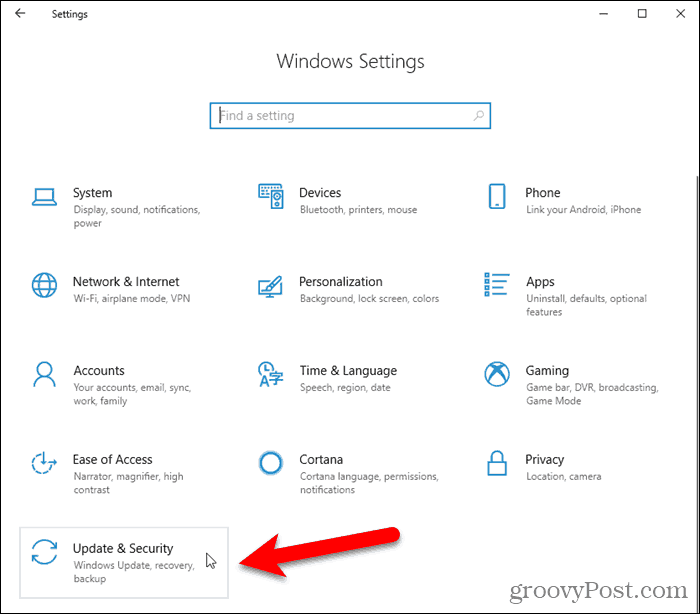
On the left pane, click Backup. Then, click Add a bulldoze on the right.
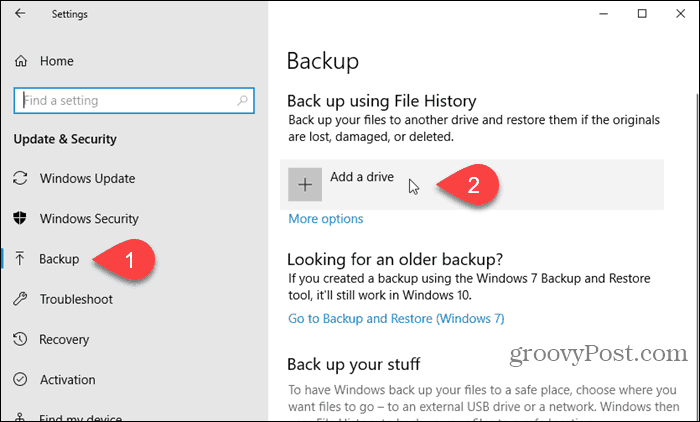
A list of bachelor drives displays on the left. Click the one y'all want to apply.
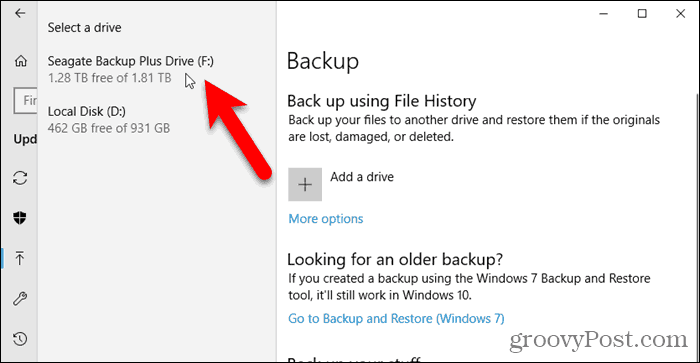
Configure File History
One time y'all select a drive, Windows automatically turns on File History.
To configure File History, click More than options on the Fill-in screen.

The Backup options screen allows you to prepare how oft File History backs upwardly your files and how long versions are saved. Select options from the Support my files and Keep my backups drop-down lists.

File History automatically adds certain folders to the backup. And so before you begin the fill-in procedure, you can remove folders you don't desire to back up.
Nether Back up these folders, select a folder yous don't desire to back upward and click Remove. Repeat for each binder you want to remove.

Yous tin too specifically exclude folders. And so, for case, if there'southward a subfolder in one of the folders being backed upward that you don't want to back up, you tin exclude that subfolder.
Under Exclude these folders, click Add together a folder. Next, select a folder to exclude on the Select Folder dialog box and click Choose this folder.
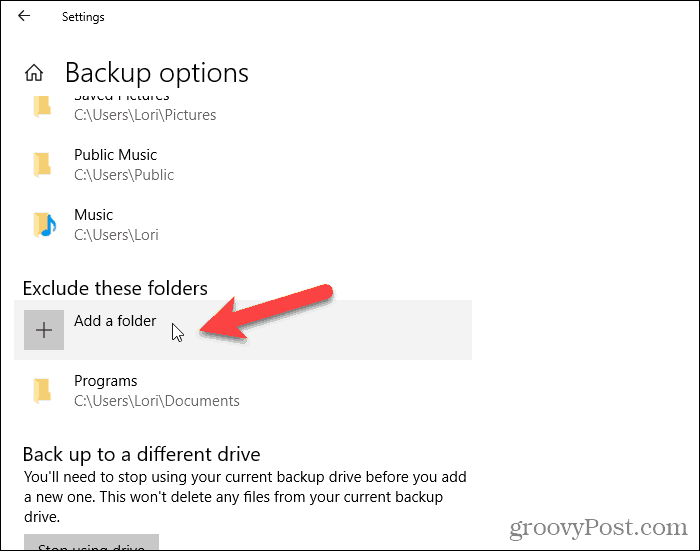
When you prepare to beginning the backup procedure, click Support at present under Overview.
You lot'll run into a bulletin proverb File History is backing up your data. But, unfortunately, at that place is no estimated time listed. So the initial backup may take a while.
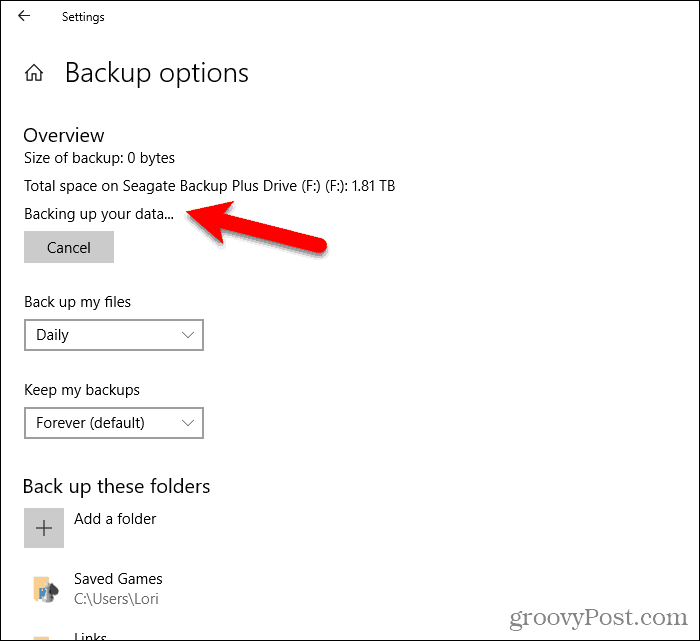
Redundancy to a Network Location
As we mentioned previously, you can utilise a network location for your backup equally well. For case, maybe you have a home server or network-attached storage (NAS) box that y'all desire to employ.
Go to the Backup options screen, if you're not already on it, and click See avant-garde settings nether Related settings.

Click Select drive in the right panel on the File History screen in the Control Panel.
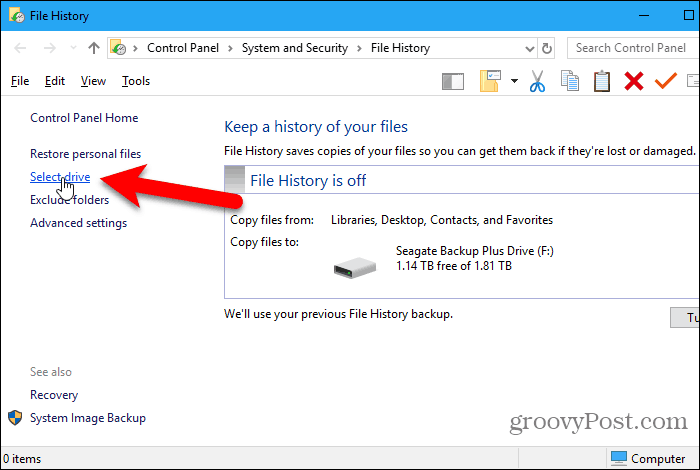
On the Select a File History drive screen, you lot'll meet local and network drives listed. If you don't see the network bulldoze, you want to use, click Add a network location and select it.
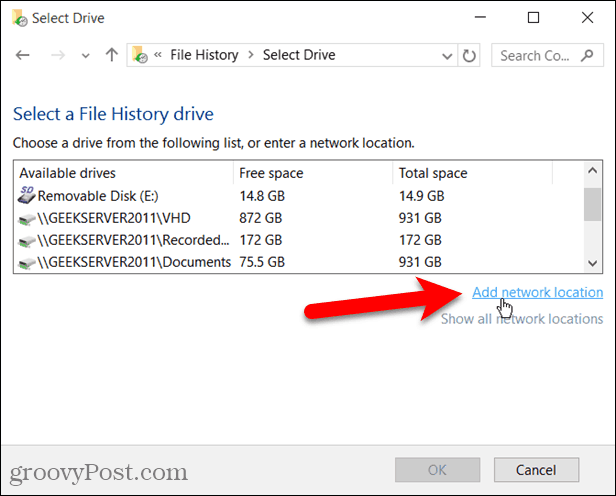
Recover Files Using PC Settings
Suppose you need to recover a file or directory stored on a local drive (not deject storage), open PC Settings, and go to Update & Security > Backup. And then, click More options.

On the Fill-in options screen, click Restore files from a current backup nether Related Settings.
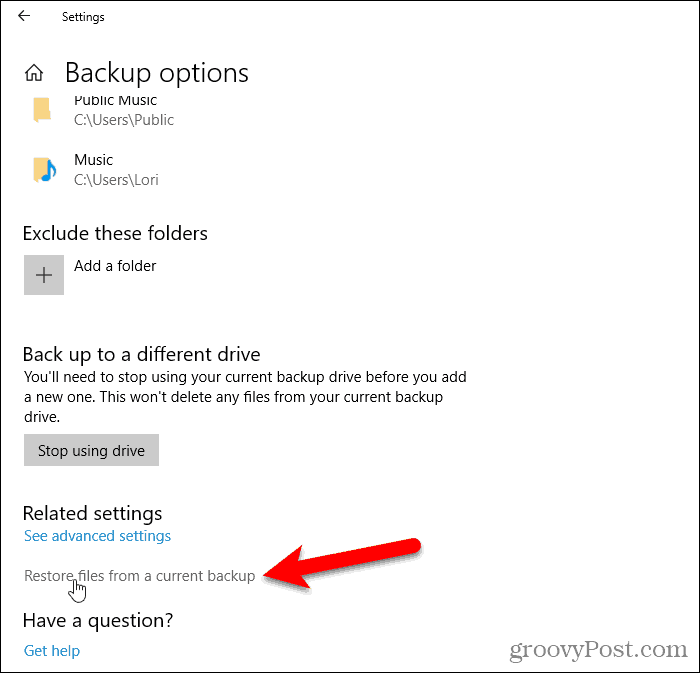
Navigate to the file you want to restore and use the pointer buttons to select a version of the file to restore.
Then, click the dark-green Restore button.

Recover Files Using File Explorer
Or you lot can use File Explorer to restore a previous version of a file.
Open File Explorer and select the file you want to restore a version of. Then, click History on the Home tab.

Again, you can go back in time using the pointer buttons and select a different version of the files to restore.
Click the green restore push button to restore the selected version.

Or, yous can right-click a file and select Backdrop. Then, click the Previous Versions tab and select the version of the file you need. This is a good way to grab an individual document you lot made changes to but desire to work with a previous draft instead.
Click Restore to restore the version of the file to the original location. If yous want to restore the file to a different location, click the downwardly arrow on the Restore button and select Restore To.
On the Restore to dialog box, navigate to the binder where you want to restore the selected version of the file and click Select Folder. If the file already exists there, yous'll be asked if you want to supercede the file.

Clean Upwards File History
After a while, depending on the drive size and your configured settings, you might become a notification that yous need to free up space on your File History drive.
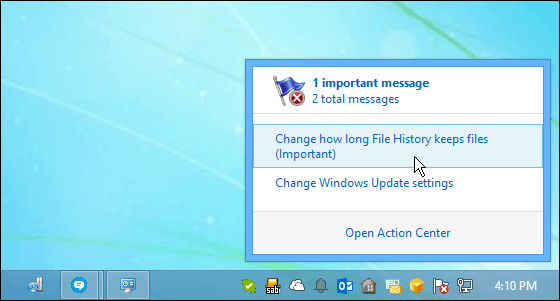
If you go that bulletin, go to PC Settings > Update & Security > Backup > More than options > Run across advanced settings. Then, click Advanced settings on the left.
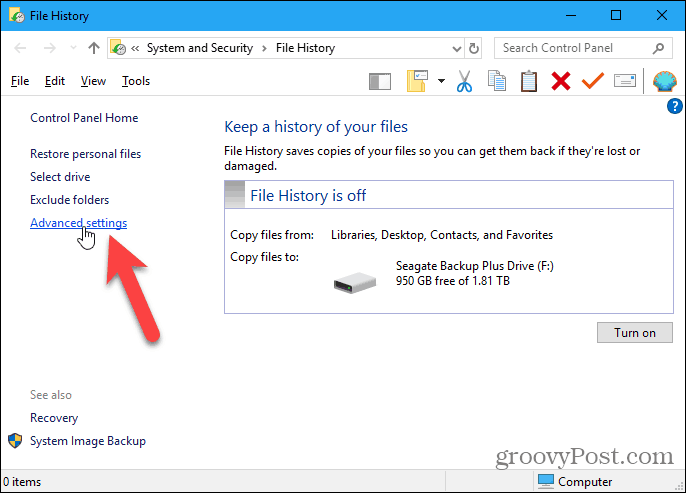
On the Advanced settings screen, click Clean up versions.

Select how far back you want to delete folders and files from the driblet-down list. Then, click Clean upwards.

Backing Upward Should Be Function of a Regular Routine
Make sure you lot support regularly to avoid data loss.
File History backs upward information files, but non the Windows system. But you tin can create a Windows 10 organization image to do that.
You can also create a Windows 10 restore point to go back in time to a previous version of your system. This is useful if you're going to install some software and desire a way to go back to before the installation if something goes wrong. Creating a system restore point is also recommended before making changes to the registry. Of course, the registry tin can be backed upwardly on its own, besides.
If Windows x becomes ho-hum and unresponsive at times, you lot can reset it. This resets Windows 10 to manufactory default but keeps all your information. After a reset, you must reinstall all your software, so be certain you accept the time to do this before resetting Windows ten.

How To Change File History Drive Windows 10,
Source: https://www.groovypost.com/howto/configure-windows-10-file-history/
Posted by: alvarezhourgen39.blogspot.com


0 Response to "How To Change File History Drive Windows 10"
Post a Comment